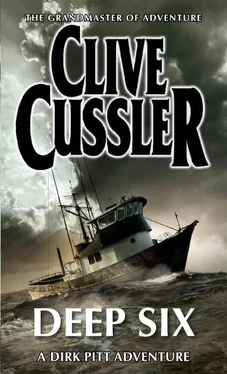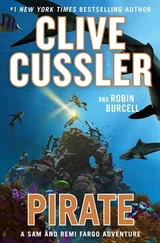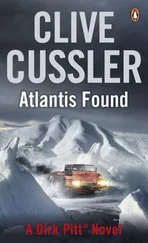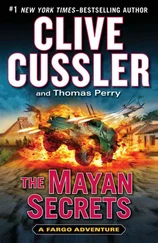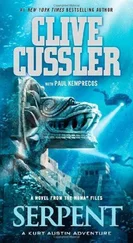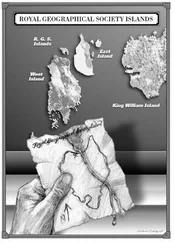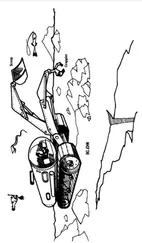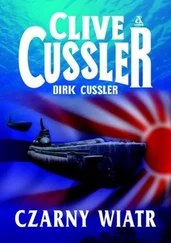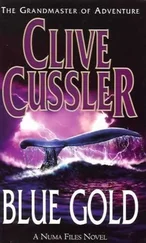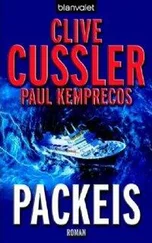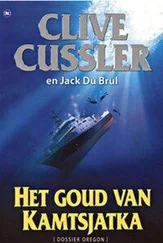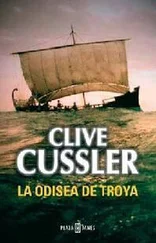Fawcett found it almost impossible to grasp the enormity of it. “Christ, what in hell is it?”
“Too early to tell,” Sandecker replied. “The Environmental Protection Agency has a computerized mass data storage and retrieval system that contains detailed information on two hundred relevant characteristics of some eleven hundred chemical compounds. Within a few seconds they can determine the effects a hazardous substance can have when spilled, its trade name, formula, major producers, mode of transportation and threat to the environment. The Alaskan contamination doesn’t fit any of the data in their computer files.”
“Surely they must have some idea?”
“No, sir. They don’t. There is one slim possibility— but without autopsy reports it’s strictly conjecture.”
“I’d like to hear it,” the President said.
Sandecker took a deep breath. “The three worst poisonous substances known to man are plutonium, Dioxin and a chemical warfare system. The first two don’t fit the pattern. The third — at least in my mind—1 is a prime suspect.”
The President stared at Sandecker, realization and shock on his face. “Nerve Agent S?” he said slowly.
Sandecker nodded silently.
“That’s why the EPA wouldn’t have a handle on it,”! the President mused. “The formula is ultrasecret.”
Fawcett turned to the President. “I’m afraid I’m not familiar…”
“Nerve Agent S was an ungodly compound the scientists at the Rocky Mountain Arsenal developed about twenty years ago,” the President explained. “I’ve read the report on the tests. It could kill within a few seconds of touching the skin. It seemed the ideal answer In an enemy wearing gas masks or protective gear. It clung to everything it touched. But its properties were loo unstable — as dangerous to the troops dispersing it as to those on the receiving end. The Army gave up on it and buried it in the Nevada desert.”
“I fail to see a connection between Nevada and Alaska,” Fawcett said.
“During shipment by railroad from the arsenal outside Denver,” Sandecker enlightened him, “a boxcar containing nearly a thousand gallons of Nerve Agent S vanished. It is still missing and unaccounted for.”
“If the spill is indeed this nerve agent, once it’s found, what is the process for eliminating it?”
Sandecker shrugged. “Unfortunately, the present state of the art in containment and cleanup technology and the physical-chemical characteristics of Nerve Agent S are such that once it enters the water very little can be done to ameliorate the penetration. Our only hope is to cut off the source before it releases enough poison to turn the ocean into a cesspool devoid of all life.”
“Any lead on where it originates?” asked the President.
“In all probability a ship sunk between Kodiak Island and the Alaskan mainland,” replied Sandecker. “Our next step is to backtrace the currents and draw up a search grid.”
The President leaned over the coffee table and studied the red circle on the chart for a few moments. Then he gave Sandecker an appraising stare. “As director of NUMA, Admiral, you’ll have the dirty job of neutralizing this thing. You have my authority to tap any agency or department of the government with the necessary expertise — the National Science Board, the Army and Coast Guard, the EPA, whoever.” He paused thoughtfully, then asked, “Exactly how potent is Nerve Agent S in seawater?”
Sandecker looked tired, his face drawn. “One teaspoon will kill every living organism in four million gallons of seawater.”
“Then we better find it,” said the President, a touch of desperation in his voice. “And damned quick!”
Deep beneath the murky waters of the James River, off the shoreline of Newport News, Virginia, a pair of divers struggled against the current as they burrowed their way through the muck packed against the rotting hull of the shipwreck.
There was no sense of direction in the black dimensionless liquid. Visibility was measured in inches as they grimly clutched the pipe of an airlift that sucked up the thick ooze and spit it onto a barge seventy feet above in the sunlight. They labored almost by Braille, their only illumination coming from the feeble glimmer of underwater lights mounted on the edge of the crater they’d slowly excavated over the past several days. All they could see clearly were particles suspended in the water that drifted past their face masks like windswept rain.
It was hard for them to believe there was a world above, sky and clouds and trees bending in a summer breeze. In the nightmare of swirling mud and perpetual darkness it hardly seemed possible that five hundred yards away people and cars moved on the sidewalks and streets of the small city.
There are some people who say you can’t sweat underwater, but you can. The divers could feel the sweat forcing its way through the pores of their skin against the protective constriction of their dry suits. They were beginning to experience the creeping grasp of weariness, yet they had only been on the bottom for eight minutes.
Inch by inch they worked their way into a gaping hole on the starboard bow of the hulk. The planking that framed the cavernlike opening was shattered and twisted as though a giant fist had rammed into the ship. They began to uncover artifacts: a shoe, the hinge from an old chest, brass calipers, tools, even a piece of cloth. It was an eerie sensation to touch man-made objects that no one had seen in 127 years.
One of the men paused to check their air gauges. He calculated they could work another ten minutes and still have a safe supply of breathable air to reach the surface.
They turned off the valve on the airlift, stopping the suction, while they waited for the river current to carry away the cloud of disturbed silt. Except for the exhaust of their breathing regulators, it became very still. A little more of the wreck became visible. The deck timbers were crushed and broken inward. Coils of rope trailed into the murk like mud-encrusted snakes. The interior of the hull seemed bleak and forbidding. They could almost sense the restless ghosts of the men who had gone down with the ship.
Suddenly they heard a strange humming — not the sound made by the outboard motor of a small boat, but heavier, like the distant drone of an aircraft engine. There was no way of telling its direction. They listened for a few moments as the sound grew louder, magnified by the density of the water. It was a surface sound and did not concern them, so they reactivated the airlift and turned back to their work.
No more than a minute later the end of the suction pipe struck something hard. Quickly they closed off the air valve again and excitedly brushed away the mud with their hands. Soon they realized they were touching, not wood, but an object that was harder, much harder, and covered with rust.
To the support crew on the barge over the wreck site time seemed to have reversed itself. They stood spellbound as an ancient PBY Catalina flying boat made a sweeping bank from the west, lined up on the river and kissed the water with the ungainly finesse of an inebriated goose. The sun glinted on the aquamarine paint covering the aluminum hull, and the letters NUMA grew larger as the lumbering seaplane taxied toward the barge. The engines shut down; the co-pilot emerged from a side hatch and threw a mooring line to one of the men on the barge.
Then a woman appeared and jumped lightly onto the battered wooden deck. She was slim, her elegant body covered by a narrow-falling tan overshirt, worn long and loose, held low on the hip by a thin sash, over tapering pants in green cotton. She wore moccasin-style boater shoes on her feet. In her mid-forties, she was about five foot seven; her hair was the color of aspen gold and her skin a copper tan. Her face was handsome, with high cheekbones, the face of a woman who fits no mold but her own.
Читать дальше
